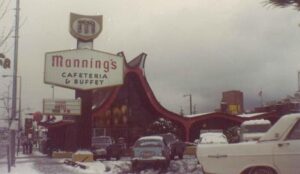Business Success Rates
Building a successful business is challenging, and every year, businesses around the world fail. Even a business that manages to survive for a few years is not guaranteed to be a long-term success. For example, according to the U.S. Bureau of Labor Statistics (BLS), only 14.4% of the businesses that opened in the U.S. during 1994 were still operating as of March 2022. BLS began tracking establishment survival rates in 1994 and found that it varies by industry, with survival rates among health care and social assistance businesses the highest, while construction companies have the lowest survival rates.
But regardless of industry, BLS data shows that long-term survival is challenging for any business. Generally, at least 20% of new businesses fail within the first two years of operation, and an additional 25% fail within five years. In 2015, BLS found that only about 35% of the businesses that opened in the U.S. between 1994 and 2006 had survived for more than ten years.
Reasons for Business Failure
Why is business success so elusive? According to Investopedia, six issues are the primary reasons for business failure.
- Failure to investigate the market and understand what it takes to successfully break into an industry.
- Insufficient business plan.
- Lack of funding to support a new business venture.
- Poor location and/or inadequate marketing program, including a limited online footprint.
- Failure to adapt and embrace change.
- Squandering success by growing the business too quickly.
Manning’s Achieved Phenomenal Success
When Manning’s last restaurant closed in 1984, the company’s doors had been open for 76 years. This is phenomenal business success. How did Manning’s accomplish this?
Manning’s business model was a framework grounded in many sustainable business practices that contributed to the company’s success. This included adherence to generally accepted business principles, marketing fundamentals, change management, exemplary labor relations (including women employees and managers), an ethical organizational culture, and ethical leadership.

Our book, “Manning’s: A Formula for Success,” presents Manning’s as a case study of how to utilize best practices in business management and operate a successful business. The company was started by the Manning brothers, Edward and William, who had an astute understanding of business and how to implement general business principles using business sustainability strategies. Starting in 1908 with a humble coffee stand in Seattle’s Pike Place Market, the Manning brothers and subsequent managers grew their business into a major enterprise that eventually included restaurant and café locations throughout the West Coast, along with coffee sales by grocery stores and other retailers. At its peak, the company was worth millions of dollars and employed hundreds of people.
How Did Manning’s Achieve Success?
To accomplish this, the Manning brothers followed best practices in sustainability and did everything right, avoiding the issues identified by Investopedia as reasons for business failure.
- The Manning brothers investigated the market.
- Once they settled on coffee and tea as their initial venture, they understood what was needed to break into the market and be successful.
- They had an actionable business plan and sufficient funding to support their new business.
- They applied scientific management throughout the company to ensure consistency in the quality of Manning’s coffee, food, and service, whether delivered in San Francisco, Portland, Seattle, or elsewhere.
- Manning’s initial location in Seattle’s new Pike Place Market was optimum for reaching customers who wanted the company’s products, and as the company grew, additional outlets were in prime locations.
- When a few locations, such as the company’s first coffee store in Portland, weren’t successful, the Manning brothers quickly closed those locations rather than squander resources.
- To survive for 76 years, Manning’s was adaptable, willing to embrace change. This included a knack for creativity and innovation. For example, Manning’s opened one of the earliest cafeterias on the West Coast, and in the 1960s, when Manning’s combined buffet food with table service in its restaurants, this was a state-of-the-art concept.
- The company also paced its expansion, ensuring that the business grew at a manageable, profitable pace.
In addition to the above, Manning’s developed a robust marketing program to promote the company’s goods and services in a forthright manner that resonated with customers. Some of Manning’s marketing techniques, such as a coloring book for children that taught the origins of coffee, were regarded as so innovative and effective that they earned praise from the prestigious Tea and Coffee Trade Journal. The Internet wasn’t available in Manning’s era, but the company used other marketing techniques successfully, including newspaper advertisements, billboards, and more ingenuous tools, such as Googie architecture.

Manning’s Ballard restaurant in Seattle used Googie architecture to attract attention and tempt customers to stop by.
Even the interior of Manning’s cafeterias and other outlets became marketing tools as Manning’s provided a welcoming environment with good customer service that made customers feel at home. Manning’s offered a wide variety of reasonably priced food that was so well liked it earned a reputation among foodies. For example, during the 1960s and 1970s, the J.P. Getty Museum in Los Angeles served Manning’s carrot cake in its cafe. According to area residents, the museum was better known for this cake than for its works of art.
Manning’s is a Case Study for Business Success
Achieving success in business can be challenging, and, as BLS data shows, many businesses fail. Manning’s offers a dynamic case study of how businesses can use business management best practices to implement business sustainability strategies and thrive.
Our blog, “Women Were a Key to Manning’s Success,” explores the role of women in Manning’s success, since the company relied heavily on female employees. This includes placing several women in management positions in the 1930s to 1960s, long before most companies provided such opportunities to women. Even today, Manning’s offers a role model for how businesses can empower women, making them a vital part of any company’s success.
Ethics was a major factor in Manning’s success and our blog, “Ethics and Business? Using Sustainable Business Practices, Manning’s Demonstrated How to be Ethical AND Successful,” explores how Manning’s made ethics a priority in the company’s operations. Ethical leadership that cultivated an ethical organizational culture was a cornerstone of Manning’s success.
Want to learn more? Please check out our book, “Manning’s: A Formula for Success.”
Copyright ©2023 Locke & Kant, LLC


